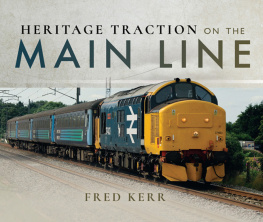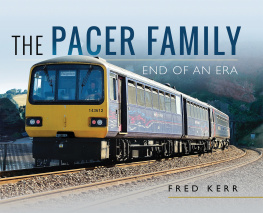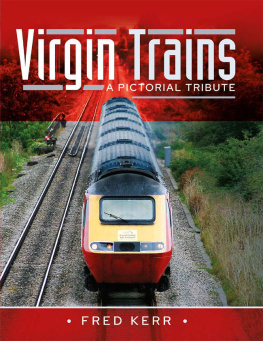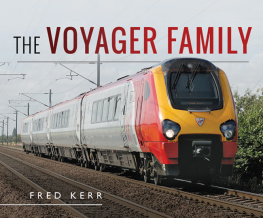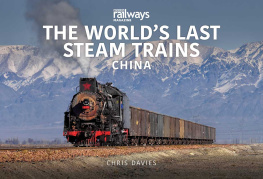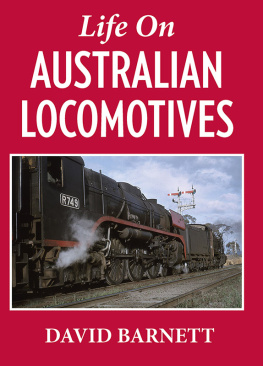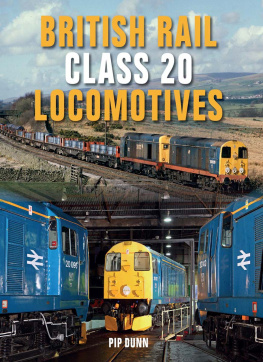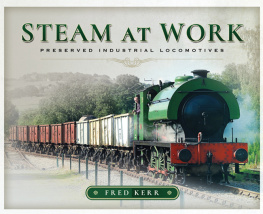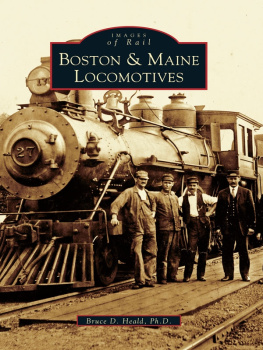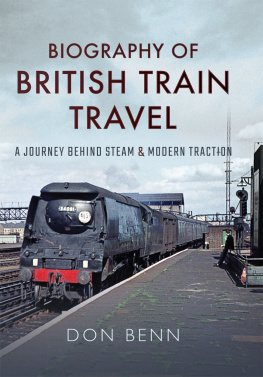
HERITAGE TRACTION ON THE MAIN LINE
HERITAGE TRACTION ON THE MAIN LINE
Fred Kerr
First published in Great Britain in 2018 by
Pen & Sword Transport
An imprint of
Pen & Sword Books Ltd
47 Church Street
Barnsley
South Yorkshire
S70 2AS
Copyright Fred Kerr 2018
ISBN 978 1 52671 312 4
eISBN 978 1 52671 314 8
Mobi ISBN 978 1 52671 313 1
The right of Fred Kerr to be identified as Author of this work has been asserted by him in accordance with the Copyright, Designs and Patents Act 1988.
A CIP catalogue record for this book is
available from the British Library.
All rights reserved. No part of this book may be reproduced or transmitted in any form or by any means, electronic or mechanical including photocopying, recording or by any information storage and retrieval system, without permission from the Publisher in writing.
Pen & Sword Books Limited incorporates the imprints of Atlas, Archaeology, Aviation, Discovery, Family History, Fiction, History, Maritime, Military, Military Classics, Politics, Select, Transport, True Crime, Air World, Frontline Publishing, Leo Cooper, Remember When, Seaforth Publishing, The Praetorian Press, Wharncliffe Local History, Wharncliffe Transport, Wharncliffe True Crime and White Owl.
For a complete list of Pen & Sword titles please contact
PEN & SWORD BOOKS LIMITED
47 Church Street, Barnsley, South Yorkshire, S70 2AS, England
E-mail:
Website: www.pen-and-sword.co.uk
Front Cover: Class 37/4 37403 Isle of Mull has been restored by the Scottish Railways Preservation Society (SRPS) Diesel Group at its Boness base but was hired by DRS in 2016 for an initial period of six months to complement its Class 37/4 fleet. On 5 August 2016 the locomotive stormed through Brock whilst working the 10:05 PrestonBarrow service as part of the Cumbrian Coast diagrams.
Rear Cover: GBRf Class 73/2 73201 Broadlands awaits departure from Southport on 29 March 2014 with a Network Rail Inspection train to Ormskirk via Sandhills, working in top n tail mode with Network Rail Class 73/1 73138.
B ritish Railways was privatised in 1994 under the Railways Act 1993, which included the right of any locomotive owner/operator to operate locomotive(s) on the national network subject to them being fitted with the necessary equipment to work trains and being approved by Network Rail to be fit to do so. Whilst this right was geared to the continued operation of steam traction, it also opened the door to the owners of modern traction (both diesel and electric) to operate their locomotives subject to meeting the same operating conditions.
In the early days of Privatisation the rolling stock, including locomotives, was vested in Rolling Stock Companies (ROSCOs) who then leased stock to the individual Train Operating Companies (TOCs). This did not apply to the Freight Companies which had been organised into two companies (Railfreight Distribution (RfD) and Trainload Freight (TLF)) as a prelude to Privatisation; their consequent sales to new owners included the locomotives hence these never became part of the ROSCO assets.
The onset of Privatisation encouraged new railway companies which serviced niche markets such as Train Operation (TO) with Direct Rail Services (DRS) and its commitment to nuclear flask movements being one of the successful TOs. These new operators sought to reduce start-up costs by either hiring preserved locomotives, as exemplified by Cardiff Valley Railways (CVR) hiring locomotives for peak-hour services, or by buying withdrawn/stored locomotives, as exemplified by DRS.
The purchase of locomotives for either preservation (including potential main-line use) or re-use by other operators makes it difficult to qualify the status of individual locomotives, hence the term heritage traction has been frequently used instead to identify locomotives by age rather than ownership/usage. In this album that age delineation has been set at twenty years, but note that the term heritage traction also defines such locomotives sold (or hired) after Privatisation to a second owner/ operator in addition to those already preserved.
During the early part of the twenty-first century heritage traction was the mainstay of niche operators such as DRS and West Coast Railway Company (WCRC) whilst existing operators such as GB Railfreight (GBRf) proved willing to use heritage traction when the need arose. Later new operators such as Colas Railfreight also found it economic to use heritage traction to establish their business before committing to the purchase of more modern locomotives to service an established business.
This album has not considered the fortunes of diesel shunting locomotives, as their operations are committed more to industrial usage rather than the main line, but seeks to illustrate the variety of main line locomotives which were able to continue working on the national network within the framework of the Railways Act 1993. This album also notes the rise and fall of some of the new companies through changes of locomotive ownership; a case in point being Class 47/8 47832, which has been operated by four companies (Fragonset; Victa Rail; DRS; WCRC) since being withdrawn from service by First Great Western in 2004.
Fred Kerr, October 2017

Class 20/0 D8056 was hired by Earles Cement from Harry Needle Railway Company (HNRC) to transfer wagons between the cement works and the interchange siding at Earles Sidings; on 22 July 2003 D8056 shunts a loaded train from the works site into the siding.
Locomotive Owners and Operators
Preserved Locomotive Owners
The Railways Act 1993 created a legislative framework that allowed the use of privately-owned locomotives subject to them meeting specific operating standards set by the Office of Rail Regulation (ORR) and being approved to operate by Network Rail (as successor to Railtrack). Whilst the rules were geared to the continued use of steam traction, they also provided the opportunity to use preserved diesel/ electric locomotives on the national network subject to them also meeting the same regulations.
Companies Using Heritage Traction
Privatisation sought to encourage new companies to enter the railway industry and, of those which entered the area of train operations, some started up by hiring/buying locomotives from existing companies. Locomotive ownership may differ from the locomotive operator, even where the locomotive carries the operators livery; where possible ownership of the locomotive will be identified within the appropriate caption(s). Some of the new operators encouraged by Privatisation are identified in this album and include:
Advenza Freight a freight company that became part of Cotswold Rail in 2005
Colas Railfreight a French company that began operating in the UK in 2007 and initially hired locomotives before buying Class 47/56 locomotives to build up its business
Cotswold Rail initially a rolling stock seller that bought Class 47s then provided Thunderbird services to East Anglian TOCs. It bought Advenza Freight in 2005 but tax problems with the latter company in 2009 forced both companies into administration in 2010
Devon & Cornwall Railways (DCR) began operation in 2008 as part of the British and America Railway Services (BARS) set up by the USA-based Iowa Pacific Holdings company; as at December 2016 DCR provides spot hire traction for rolling stock moves

